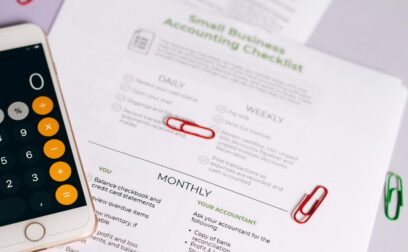Businesses small and large will have their share of problems no matter the industry or profession. Pricing products and services is one that most businesses will empathise with. Understanding how to price your products can make the difference in a long and thriving business or one that struggles to stay afloat.
What is product pricing?
Product pricing is the process of setting a value for your product or service that your target market is willing to pay. For example, if you’re opening a coffee shop, product pricing comes into play when determining how much to charge for each type of coffee. Likewise, if you own a service-based business, you may opt for a per-project or per-hour pricing scheme.
How should I price my products?
When deciding how to price your products, you’ll want to consider both your costs and your customer’s perception of value. This balance ensures you cover expenses while appealing to your market.
Here’s how to start:
- Evaluate your costs: Know the ins and outs of what it takes to produce your product or deliver your service.
- Understand your market: Consider what your target customers are willing to pay and how your competitors are pricing similar products.
- Choose a pricing strategy: Select a strategy that aligns with your brand, market position, and profit goals.
If you’re having trouble knowing where to begin, competitor research can give you insight into how pricing is done for your industry and your location. This can also be a great way to see where there are gaps in the market and fill them accordingly to add value and increase your premium.
An example of this would be called a Competitive Pricing Matrix. You can view a simple outline of what this could look like below:
| Company | Price | Quality | Design | Brand Recognition | Customer Service |
| Your Product | €€ | High | Modern | Medium | Excellent |
| Competitor A | €€ | Medium | Classic | High | Good |
| Competitor B | € | Low | Modern | Low | Average |
| Competitor C | €€€ | Very High | Innovative | Very High | Excellent |
How to price your product in 3 steps
Pricing your product smartly involves a detailed look at the costs involved in making your product, understanding the profit you aim to achieve, and considering the ongoing expenses that keep your business running. Here’s how to break it down:
1. Add up your variable costs (per product)
Variable costs change based on how much you produce or sell. These costs include:
- Materials: The raw ingredients or parts needed to make your product. For example, if you’re making handmade candles, this would include wax, wicks, and fragrance oils.
- Direct labor: The wages you pay to employees directly involved in production. If you run a custom T-shirt business, this includes the time spent designing and printing each shirt.
- Packaging: The cost of packaging your product, which for a bakery, could be the boxes and bags used to package bread or pastries.
Calculate the total variable cost by adding these expenses together for each product.
2. Consider your profit margin
Your profit margin is the percentage of the selling price that is profit. Here’s how to think about it:
- Determine your desired margin: Decide what profit margin you aim for. A typical profit margin might be anywhere from 20% to 50%, depending on your industry.
- Apply it to your pricing: For instance, if your variable costs are €5, and you want a 50% profit margin, you’ll need to sell your product at a price where €5 represents 50% of the price, meaning a selling price of €10.
3. Include fixed costs
Fixed costs are your overheads that stay the same no matter how much you produce. These include:
- Rent: The cost of leasing your business space. Whether you sell 10 products or 1000, your rent remains constant.
- Utilities: Electricity, water, and internet services are examples of utilities that you pay for every month.
- Salaries: Wages paid to employees who aren’t directly producing goods but are essential to your business, like your sales team or managers.
Divide your total fixed costs by the number of units you expect to sell to find out how much of these costs each unit should bear. For example, if your fixed costs are €2,000 a month and you sell 1,000 units, each unit carries €2 of fixed costs.
Example of pricing a product
Let’s take a small bakery as our example. Imagine you own this bakery and want to price a new type of artisan bread you’ve just started baking.
Here’s how you could apply the steps discussed above:
Step 1: Add up your variable costs (per product)
- Materials (flour, water, yeast, etc.): €1.50
- Direct labor (baker’s time): €2.00
Total variable cost per loaf: €3.50
Step 2: Consider your profit margin
You decide you want a profit margin of 50% on each loaf. This means you want the profit to be 50% of the selling price.
Step 3: Don’t forget about fixed costs
Your fixed costs (rent, utilities, equipment depreciation, etc.) amount to €2000 a month. You estimate you’ll sell 1000 loaves of bread monthly.
Fixed cost per loaf: €2000 / 1000 = €2.00
Calculating the selling price
To find the selling price per loaf, you add your variable cost per loaf to the fixed cost per loaf and then apply your desired profit margin.
Total cost per loaf (variable + fixed): €3.50 + €2.00 = €5.50
To achieve a 50% profit margin, the selling price needs to be 150% of the total cost (100% to cover the cost and 50% for profit).
Selling price per loaf: €5.50 x 1.5 = €8.25
Therefore, to cover your costs and achieve your desired profit margin, you should price your artisan bread at €8.25 per loaf.
How much profit should I make on a product?
Profit margins typically range from 20% to 50%, but this can vary widely depending on the industry and the specific product. It’s essential to strike a balance to ensure your profit is as high as possible without overpricing your product.
- Aim for optimal profit: Your goal should be to maximise profit while considering the marginal cost (the cost of producing one additional unit) and marginal revenue (the revenue from selling one additional unit).
- If the cost of making one more product is lower than the revenue it generates, it’s usually a good idea to increase production.
- Beware of overpricing: Setting the profit margin too high can lead to decreased sales if the price exceeds what customers are willing to pay. This is where understanding the balance between marginal cost and marginal revenue becomes crucial.
- For example, if producing and selling one more widget costs €5 but only brings in €4 in revenue, you’re losing money on each additional widget made and sold beyond a certain point.
3 tips to raise your profit margin
Raising your profit margin can often be achieved by focusing on the low-hanging fruit within your business operations. One effective strategy is exploring wholesale purchasing options, which can significantly reduce your per-unit cost, especially for high-volume items. Seeking out lower-cost suppliers without compromising quality can also contribute to better margins by decreasing direct costs.
Plus, lowering overhead by optimizing your workspace efficiency or reducing unnecessary expenses can make a substantial difference in your bottom line. Maximising your supply chain efforts through improved logistics and inventory management can lead to reduced waste and better cash flow.
Last, don’t underestimate the power of negotiation with your vendors; even slight reductions in cost can add up over time, enhancing your overall profitability.
What factors should be considered when pricing a product?
Continuing from the discussion of profit, several key factors should influence how you price your product:
- Marginal cost vs. marginal revenue: This is essential for understanding how much you can produce and sell without diminishing your profit margins. If your marginal revenue consistently surpasses your marginal cost, you’re in a good position to consider increasing production.
- Fixed costs and profits: Remember that fixed costs (like rent and salaries) don’t change with the level of production or sales. Pricing your product must cover these costs and contribute to your profit. For instance, if your fixed costs are high, you’ll need a higher profit margin per product to ensure your business remains profitable.
How Swoop can help
Throughout our discussion on how to price a product, from determining the right profit margin to considering both variable and fixed costs, it’s clear that financial management is key to business success. Swoop offers a bridge to this success for SMEs by providing a platform that connects business owners with a range of financial solutions tailored to their unique needs.
Swoop simplifies the process of finding and securing funding for your business.
Whether you’re looking for loans to increase production, reduce costs, or explore new market opportunities, Swoop’s smart matching technology and access to expert advice empower you to make informed financial decisions. By tapping into Swoop’s resources, you can navigate the complexities of business financing with ease. Click the “get started” tab on Swoop’s platform to unlock these opportunities and drive your business towards its financial goals.




































 yet? Register here!
yet? Register here!